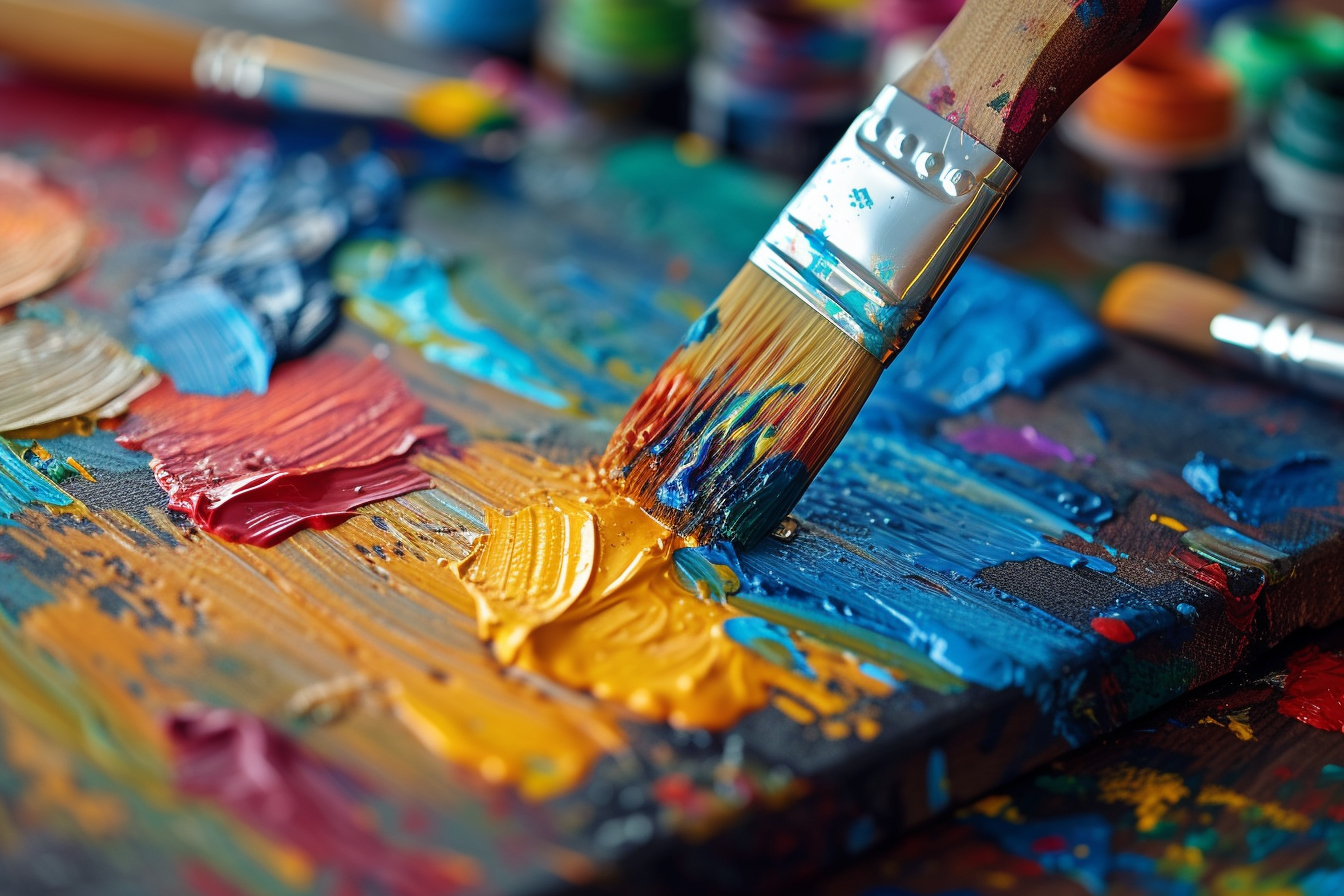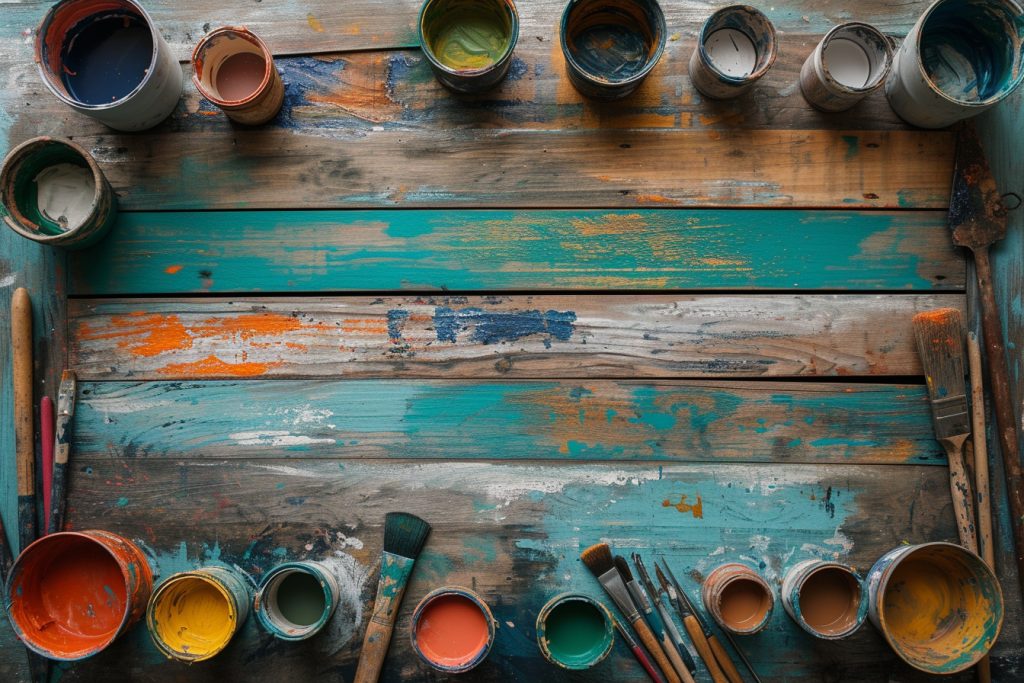Painting on wood can transform an ordinary piece of timber into a work of art. Whether you are a professional artist, a DIY enthusiast, or a weekend craftsperson, mastering the craft of wood painting will allow you to create stunning pieces with a personal touch. This article delves deep into the fundamental techniques required to achieve beautiful and lasting results when painting on wood.
Preparing the wood
Surface preparation is crucial in the painting process. Start with a smooth, clean, and primed surface to ensure that your paint adheres properly and looks its best. Begin by sanding the wood with fine-grit sandpaper to remove any splinters and rough edges. After sanding, wipe down the surface with a tack cloth or a lint-free rag dampened with mineral spirits to remove sawdust and residue. Applying a primer creates a neutral base that enhances the paint’s adhesion and color. For a natural look, select a clear primer. However, for a more vibrant appearance, choose a white primer as it will make the colors pop.
Choosing the right paint
Selecting the appropriate paint is vital to achieving the desired finish and durability. For interior projects, acrylic paints are a popular choice as they dry quickly and offer a wide range of colors. If you are painting outdoor projects, exterior-grade paints are formulated to withstand the elements. For a rustic or antique finish, chalk paint can be ideal, as it dries to a matte finish that can be distressed easily. Oil-based paints, on the other hand, take longer to dry but provide a robust and glossy finish suitable for high-traffic items.
Brush techniques
Brushwork will significantly influence the final appearance of your project. Use natural-bristle brushes for oil-based paints and synthetic-bristle brushes for acrylics. For large, flat surfaces, use a wide, flat brush to apply paint with long, even strokes. To avoid brush marks, keep a wet edge by working quickly and applying paint evenly. When painting edges or intricate details, switch to a smaller, angled brush. This helps maintain control and precision. Dry brushing is a technique in which you load a brush with a small amount of paint and lightly drag it over the surface, which gives a textured and layered effect.
Staining wood
Wood staining allows the natural grain to show through, adding character and depth to the piece. Choose a stain color that complements the wood’s natural tones. Apply the stain with a lint-free rag or a foam brush, working it into the wood grain. Wipe away any excess stain to prevent a tacky finish. Stains can be layered to deepen the color, but remember to let each layer dry thoroughly before applying the next.
Glazing for depth
Glazing is a technique in which a transparent or semi-transparent layer of color is applied over an opaque base coat, allowing for color depth and complexity. To glaze, mix a small amount of acrylic or oil paint with a glazing medium and apply it with a soft, flat brush. Glazing can be used to create shadows and highlights or to give an antiqued look to your wood project.
Layering colors

Effective layering creates richness and dimension. Start with a base layer and let it dry completely. Subsequent layers can then be applied, each adding its own hue and character to the piece. When layering, consider the transparency of your paint as well as how the underlying colors will interact with new ones being applied. Techniques like wet-on-wet, where layers are painted while the previous one is still wet, can result in interesting blends and effects.
Distressing techniques
Distressed finishes are excellent for giving new items an aged or worn look. After the base coat has dried, use sandpaper to selectively rub through the top layers of paint, emphasizing areas that would naturally show wear over time. Tool marks, dents, and scuffs can also be added to enhance the distressed quality. For more advanced antiquing, some artists mix in bits of sawdust or glazing compounds with their paint to create a time-worn texture.
Sealing and protecting
To safeguard your painted wood, sealing is an integral step. Several options are available, such as waxes, polyurethane, or varnish. Waxes provide a soft sheen and can be buffed for a subtle glow. Polyurethane, available in both water-based and oil-based forms, offers a more durable and protective coating. It comes in a variety of sheens, from matte to high gloss. Varnish, while similar to polyurethane, has a traditional finish that deepens the color and grain of the wood. Select the sealing product that best aligns with your project’s requirements and aesthetic.
Experimentation and practice
Each piece of wood is unique, and every paint job brings new challenges and opportunities. Experimentation and practice are essential. Test different techniques, tools, and materials on scrap pieces of wood before committing to your final project. Remember, oftentimes the character and charm of a painted wooden object lie in its imperfections. Embrace the learning process and let your creativity guide your technique.
Overall, painting on wood is an enriching endeavor that combines practical skills with artistic expression. Understanding the essentials—from wood preparation to sealing and protecting—provides a solid foundation for beautiful, enduring results. Delve into this craft and watch as raw wood surfaces become canvases for your creativity, each stroke and technique bringing them to life. Whether embarking on a furniture restoration, crafting bespoke signs, or adding personal touches to home decor, the journey through wood painting techniques is as rewarding as the outcomes are beautiful.









